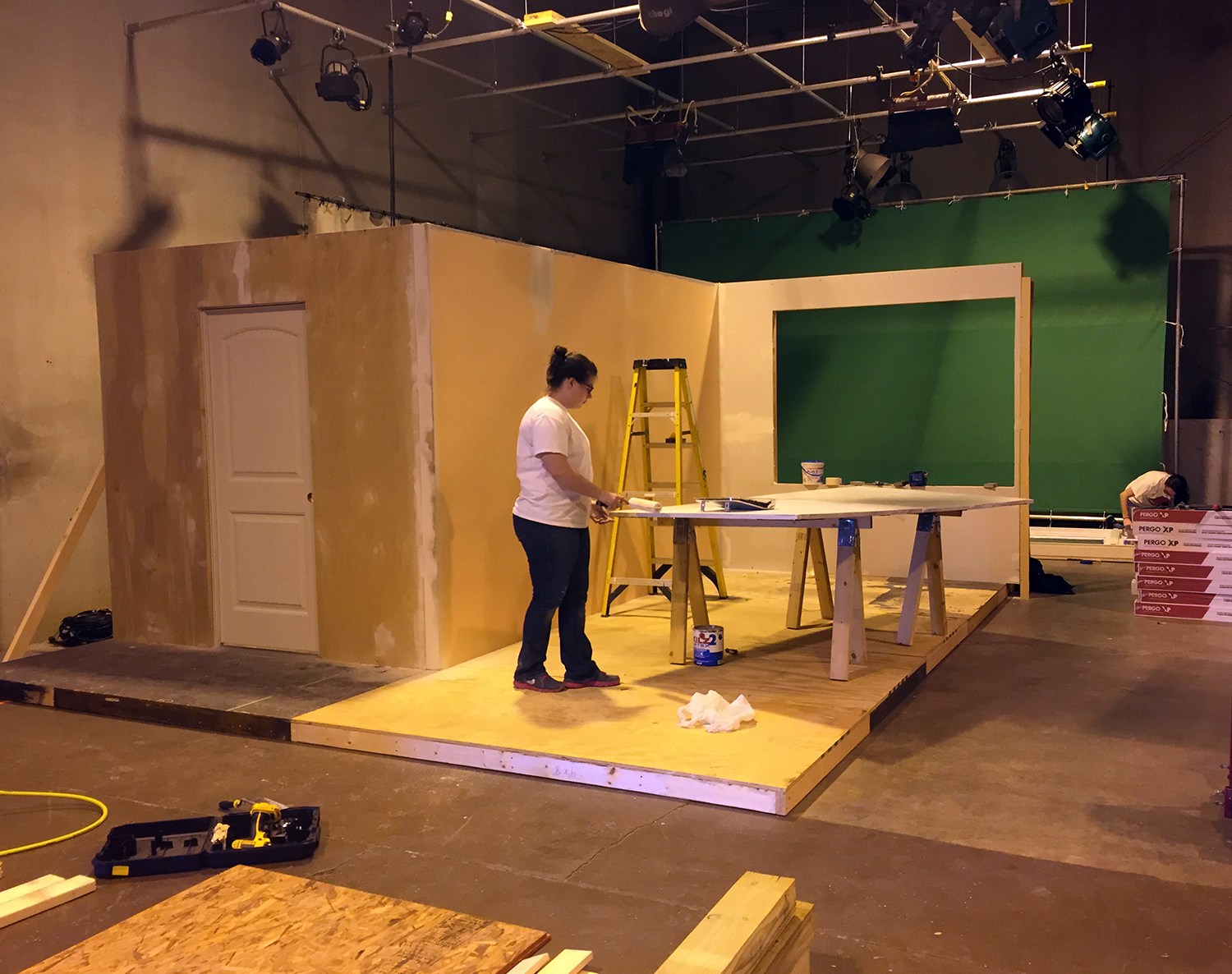Lights, cameras, commercials: Clemson performing arts staff and students find opportunities on television


Clemson students work on an outdoor set. Images courtesy of Lingo Films and Skyline Post (click image for a larger view.)
by Thomas Hudgins
Technical Director Matthew Leckenbusch and his students work all season long to bring sets to the Brooks Center stage for Clemson Players productions. But Leckenbusch also finds time for a different kind of production: commercials.
Leckenbusch and some of his students have worked on a number of locally produced television advertisements. Many are for companies such as RIDGID tools and Jackson and Perkins, but he also worked on a project in support of the South Carolina Department of Parks, Recreation, and Tourism. He got his start through connections at the Warehouse Theatre and has been involved in the field since 2013. He frequently works with Lingo Films and Skyline Post, Greenville-based production companies that are contracted to produce content and hire personnel for these projects.
For each job, Leckenbusch will receive a call three weeks in advance of the film shoot. The sponsoring company will send him storyboards and other images, and, in return, he will send a quote and drafts of his ideas for the set. After the company approves both, Leckenbusch begins to build, incorporating any changes along the way.
The shoots generally consist of one or two ten-hour days, though the parks department project was an exception. Leckenbusch spent two weeks traveling to more than 15 state parks as props master. Two teams of personnel covered ground to put together the advertisement for the department’s “Come Out and Play” campaign. For this shoot and for others, Leckenbusch serves as props master, overseeing tools and other props used during filming. He also keeps track of continuity, making sure the placement of materials and action on camera is consistent from shot to shot.
“It’s a lot like theatre, only faster,” Leckenbusch said of the process, though there are some key departures from stagecraft. Unlike his work with the Clemson Players, Leckenbusch steps in at the end of the creative process rather than the beginning. He is also not responsible for building an entire theatrical world, but only what is within the “box” of the camera lens. “In theatre, I’m worried about masking parts of the set and the audience seeing something that’s not consistent,” Leckenbusch said. “In film, I’m only worried about what’s on screen. It doesn’t matter if the edge of the set isn’t finished, because it’s not in the shot.”
The proximity of the viewer is also a factor. A theatrical set is meant to be seen from several to sometimes dozens of feet away. On film sets, cameras have to zoom in as close as a few inches. “I’m buying a little upper-scale molding for a film set, whereas, in theatre, I’m buying less expensive molding because the budget is different,” he said. “But I think the attention to detail is the same.”
The commercials have ranged from exterior to interior shots, and from rooftop to crawlspace shots. Leckenbusch says the most challenging shoots, in regard to props, are those with sets that blend interior with exterior, such as window shots. These require plants and bushes to give the illusion of being truly outdoors.
Regardless of the medium, both film and theatre set out to tell a story, even if that story is only 30 seconds long.
“A set is a set,” Leckenbusch said. “It doesn’t matter who the audience is. The main idea is the same. My work is not the main focus, but it is part of the world. If the set doesn’t match everything else, it doesn’t work.”
Leckenbusch said he enjoys the variety of these projects, and looks for ways to involve students. Jonathan Bull and Liz Haynes are two performing arts students who have participated in several of these commercials. Haynes has assisted Leckenbusch in tasks ranging from mixing five-gallon buckets of fake snow to repairing molding. She said it has been eye opening to be on the other side of a commercial. “We work hard on the set for days, make last minute changes, and the shot may only be a total of a few seconds of screen time,” she said. “We have even sprinkled dust in just the right pattern around a tool. It’s a different thought process than theatre, but it uses the same skillset.” And getting to see her handiwork onscreen is an added bonus: “It is so cool to not only get to see how it all happens, but to be a part of it. It’s fun to see a commercial I worked on and tell my mom, ‘I built part of that room,’ or ‘I’m sitting right off camera with a spray can of haze.’”
As film production continues to expand throughout Georgia and the Carolinas, Leckenbusch and his students will keep pursuing new and exciting film opportunities. So the next time you turn on your television, stick around for the commercials. You never know when you will catch a glimpse of their work.
View a RIDGID Tool commercial that includes set work by Clemson staff and students: https://www.youtube.com/watch?v=GMyhUTzxspA
Image above: Clemson student Liz Haynes works on a commercial set.
Thomas Hudgins is director of marketing and communications for the Brooks Center for the Performing Arts in Clemson.

